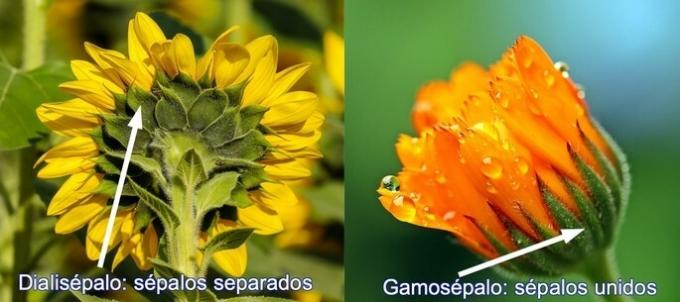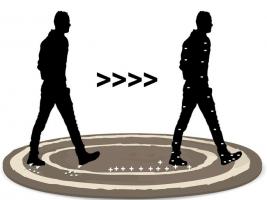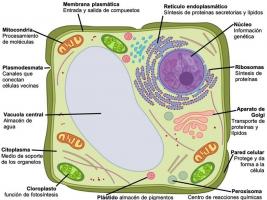The main parts of a flower
The flower is the most showy part of the plants. We find flowers only in angiosperms, the most evolved plants in the kingdom plant. Most flowers have four types of structures:
- sepals
- petals
- stamen or androecium
- pistil or gynoecium

When a flower has all these structures, they are said to be complete flowers, for example lilies. On the contrary, flowers such as begonia, which do not have petals, or other flowers that do not have any of the parts, are called incomplete flowers.
| Parts of the flower | Characteristic | Functions |
|---|---|---|
| Sepal | modified leaves Green color separate or united |
protect the cocoon |
| Petal | flat and fine Assorted colors separate or united |
attract pollinators |
| stamen or androecium | Present in male flowers | produce pollen |
| pistil or gynoecium | Present in female flowers | produce eggs |
sepals
Sepals are modified leaves that surround and enclose the other parts of the flower as they mature. It is located in the lower and outer part of the flower and together they form what we know as the calyx of the flower.
Sepals are usually green, thick, and waxy. When they have a different color, they are known as petaloid, for example Jesus' cord sage (
sage leucantha) which has purple sepals.Its function is to protect the flower bud from the attack of bacteria, fungi and insects. In addition, it maintains the humidity inside the cocoon.
Sepals can be:
- dialisepal: the sepals are separated, as in the sunflower and the rose.
- gamosepalous: the sepals are fused, as in the case of calendula and sage.

petals
The petals are the most striking part of the flower. Together they form the corolla of the flower and the sepals and petals together constitute the perianth.
The function of the petals is to attract the correct pollinator. For this, it uses different strategies, such as, for example, the flowers that open at night give off fragrances that attract nocturnal animals.
The petals are characterized by being flat and fine. In addition, they may contain pigments that give them their characteristic colors. These pigments can also absorb ultraviolet light, which insects can distinguish.
Not all flowers have petals. Some are pollinated by the wind, such as corn and wheat, so petals do not develop, as it would be a waste of energy for the plant.
Petals can be:
- gamopetalus: the petals appear fused, as in the flowers of the Ipomoea vine and the pumpkin.
- Dialipetalus: the petals are separated, as in daisy and magnolia.

stamens
The stamens constitute the androecium or the male reproductive organ of the flower. They are formed by a filament, which is inserted above the corolla of petals, and a structure called anther.
The anther is where the pollen is produced. It is composed of diploid cells, within which are microsporocytes, which then divide by meiosis to produce four microspores. Microspores will give rise to pollen.
Pollen can travel through the air or be carried by pollinators from flower to flower. This is such a strong structure that it can be used to determine the species of plants that existed thousands of years ago.
Dehiscence is the process by which anthers split open to release pollen.

Pistil
The pistil or gynoecium is the female reproductive organ of the flower. They are also known by carpel and are located in the center of it. Pistils have three main parts:
- Stigma: which captures the pollen grains.
- Style: support of the stigma that keeps it at a certain height.
- Ovary: where megaspores are produced. Inside the ovary is the placenta, where the eggs are found. An ovule develops into a seed after it has been fertilized and the ovary develops into a fruit.
male and female flowers
Some plants have female organs in one flower and male organs in another. This is the case of the pumpkin plant.

You may also be interested in:
- Parts of the plant
- angiosperm and gymnosperm
- Monocots and Dicots
- Flora and fauna
References
Mauseth, J.D. (2016). Botany-An introduction to plant biology, 6th ed. Jones & Bartlett Learning. Burlington, MA.
Salvat, J. (director). (1987). Flor, Salvat Encyclopedia of Science and Technology (volume 6, pp.1350-1353). Barcelona, Spain.


